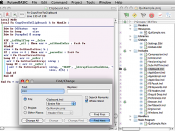Earned Value:Earned value (EV) was originally developed in the 1800's to measure performance on factory floors. But not until the 1960's, when the Department of Defense started using it, did earned value become a favorite tool in project management practices (Wilkens, 1999). If used correctly, earned value can be one of the most effective tools a project manager can utilize to both measure and control project schedules and budgets (Wais, 2008).
There are three advantages to using earned value. The first is that earned value is very accurate. The second advantage is that it is able to deal with project expenditures and work hours at uneven rates. The third advantages is that earned value is capable of giving a project manager an early warning if a project is over budget or expending more resources than scheduled (Wais, K., 2008).
Earned value is a measure of progress. There are three attributes that earn value encompasses.
These three attributes are that earned value is a uniform unit of measure for either a total project or sub-elements of a project, a consistent method for analysis of project performance and performance, and it is a basis for cost performance analysis. The units of measure which earned value is based on are work hours and dollars, with the majority of the emphasis on dollars. By basing all aspects of the work on both work hours and dollars, earned value allows a project manager to compare "apples-to-apples". Finally, this process enables a project manager to see whether a project, at any moment in time, is on track compared to the budget and schedule that were put together in the beginning of the project (Wilkens, 1999).
Within earned value there are three major elements. The first element is the Budgeted Cost of Work Scheduled (BCWS) which represents...


